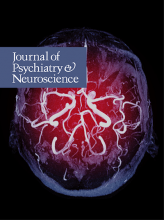We compliment the authors and journal for ensuring the “Consensus statement on the use of clozapine during the COVID-19 pandemic” was published in a timely fashion.1 Coronavirus disease 2019 (COVID-19) rapidly transformed into a pandemic, challenging medicine in ways initially not imagined; this is certainly the case not only for treatment-resistant schizophrenia and for reasons related to clozapine, but also the patient population.2
Recommendation 1 of the consensus statement speaks to the issue of extending blood monitoring, thereby allowing individuals to stay at home and decrease the risk of exposure to COVID-19 and to the spread of the virus that causes it. The recommendation provides 3 points to guide clinicians in decision making regarding the extension of blood monitoring. The first indicates that individuals on clozapine for 1 year are eligible for extensions up to 3 months, well beyond the monthly monitoring that regulatory guidelines generally require at this point. The authors note that patients on clozapine for 6–12 months should be considered on a “case-by-case basis” and give no recommendation for change during the first 6 months of treatment. As an aside, we believe that all decisions, regardless of clozapine treatment stage and criteria, must be considered on a case-by-case basis.
The consensus statement notes that severe neutropenia (absolute neutrophil count [ANC] < 500/μL) is rare (0.009% of clozapine starts), with a case fatality rate of 2.1%.3 We would add that approximately 88% of clozapine-induced agranulocytosis cases occur in the first 6 months (unpublished data: HLS Therapeutics, 2020), meaning that the risk is considerably diminished by the time individuals are on biweekly monitoring. With these figures as background, we suggest that clinicians give consideration to this group but consider a window that is narrower; e.g., 3–4 weeks. In line with the consensus statement, we agree that those being monitored weekly continue as is, reflecting the increased risk during this time period.
The second point in Recommendation 1 relates to not extending blood monitoring for anyone who has had an ANC value < 2000/μL (or < 1500/μL if there is a history of benign ethnic neutropenia).1 To our knowledge, there is no clear relationship between such drops and actual risk of agranulocytosis, which is rare, idiosyncratic and poorly understood.3–5 Using this criterion will exclude many individuals who were not at increased risk of agranulocytosis and, for this reason, we argue against it.
Finally, any discussion of clozapine and agranulocytosis risk must be couched in a historical perspective. The reintroduction of clozapine in the 1990s with strict hematologic monitoring reflects a cluster of deaths that occurred in Finland following its initial release,6 to this day not well understood but inextricably linking clozapine and agranulocytosis. We are reminded, though, that a relationship between antipsychotics and agranulocytosis preceded clozapine, with reports dating back to the 1950s and chlorpromazine.7 Agranulocytosis has since been associated with a variety of antipsychotics as well as other psychotropics, 4 and its relationship to the former is, perhaps, best captured in a study of clozapine that concluded, “After the first year of treatment, the incidence of agranulocytosis significantly decreased to the order noted with some phenothiazines.”8
Footnotes
Competing interests: G. Remington has received clinical, research and advisory board support from HLS Therapeutics, consultant fees from Mitsubishi-Tanabe Pharma Corporation, and research support from the University of Toronto, Canadian Institutes of Health Research (CIHR) and Research Hospital Fund–Canada Foundation for Innovation (RHF-CFI). No other competing interests were declared.









